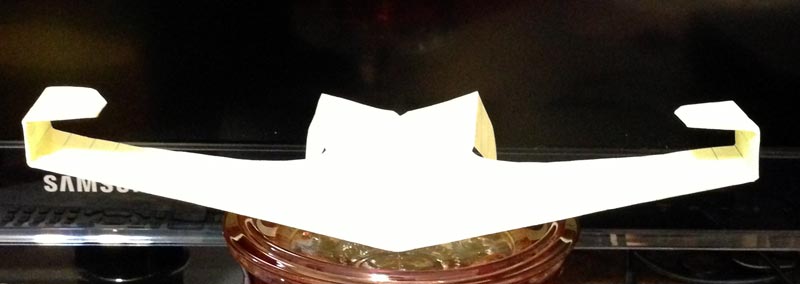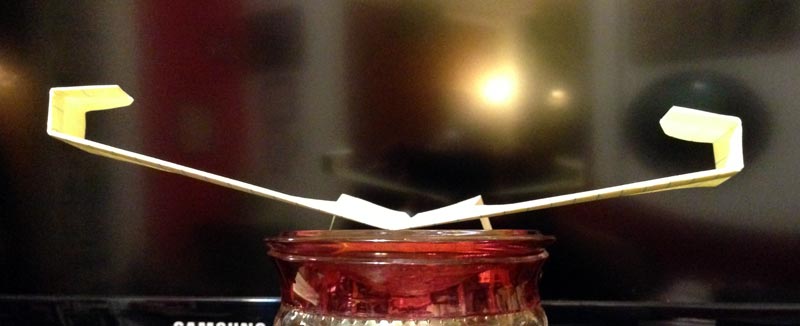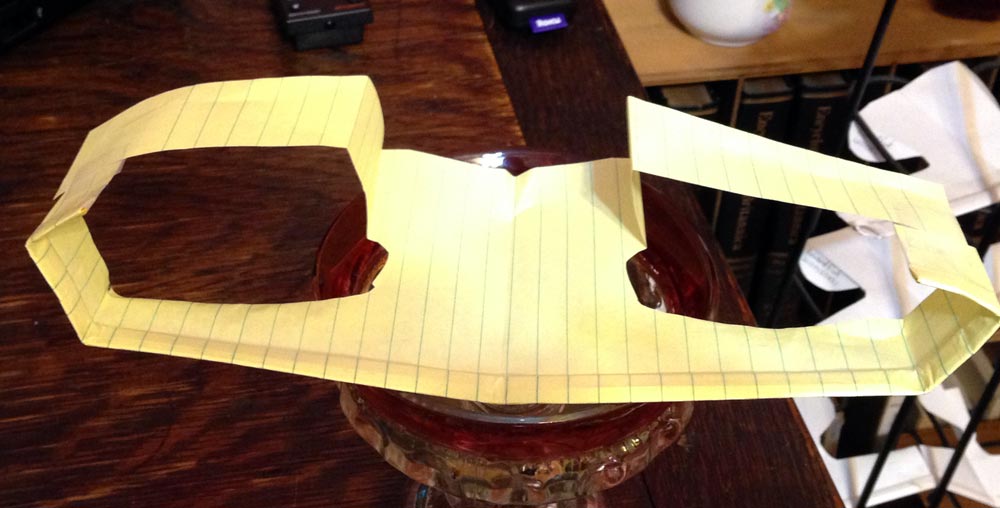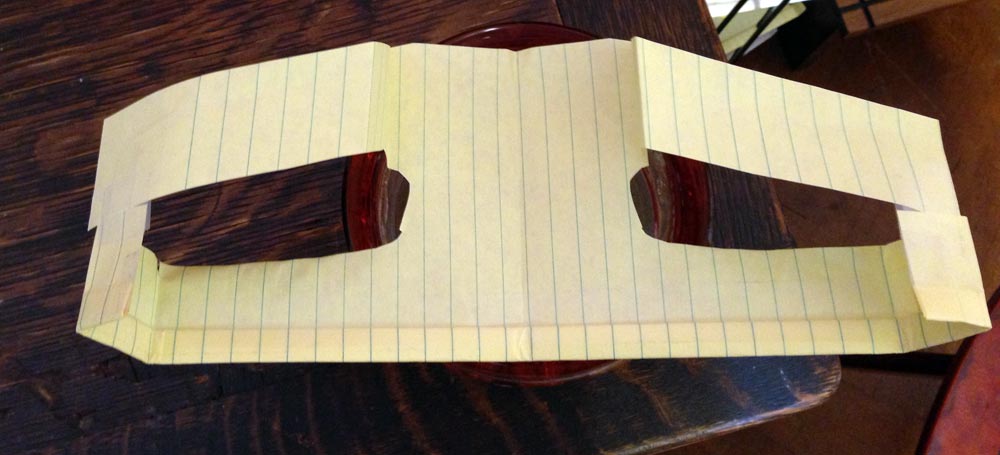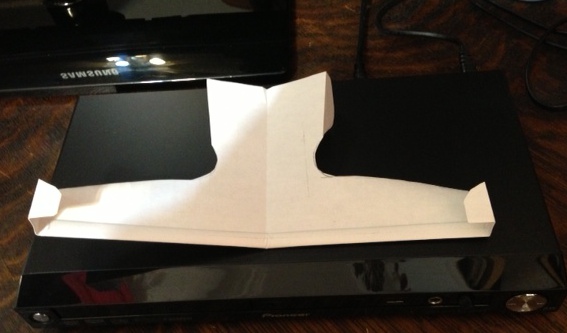
The previous plane was made from legal size paper, 8-1/2 x 14 inches. This plane is made from 11 x 14-1/4 inches paper, or a scaled-up size from 8-1/2 x 11 inches letter-size sheets. The folding technique is the tapered wing style. In tapered wing folding, you fold in half each way to start, then fold over the two front triangular corners and cut them off with a scissors. Flip and rotate the pieces and place them to match the remaining triangles on the forward section of the sheet. A small piece of tape at the center of the sheet to hold everything in place, then fold over the very forward tip about an eighth inch, or 3mm. Keep folding over and over until you reach the long fold that will be the leading edge of the wing. Run a strip of tape along the trailing edge of the fold to keep it closed. Press down hard on the fold to flatten it. The wing is now thick in the center and thin at the ends.
Cut out a barnaby shape from one side. Take this cutout and mark the other side. If you attempt to fold the plane is half, the center fold will crack. This extra thickness in the center keeps the plane stiff in flight. Fold in the ends about an inch and a half, and then fold over. Unfold to make the C wing ends.
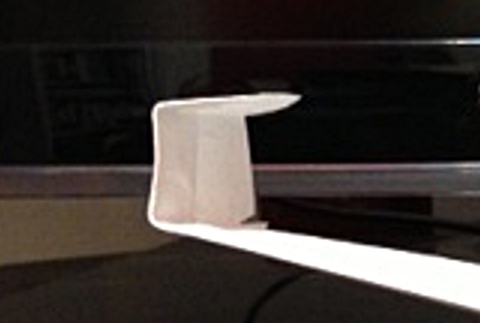
I like to take a snip about a quarter of the way in at the end of the wing to give the trailing edge more room for camber. Finish off the barnaby as usual; just be careful to balance the folds of the tail. I usually run strips of tape where the fuselage curves, to give it extra stiffness: a strip of tape along the keel will also help.
This flies much better than the yellow-pad legal-size plane. Capable of tight turns, adjustable to wide turns, very sensitive in roll (be careful balancing the plane, the control forces do not scale linearly with speed, so only small adjustments). It should be fine indoors and out, but looks to be happiest out-of-doors.
